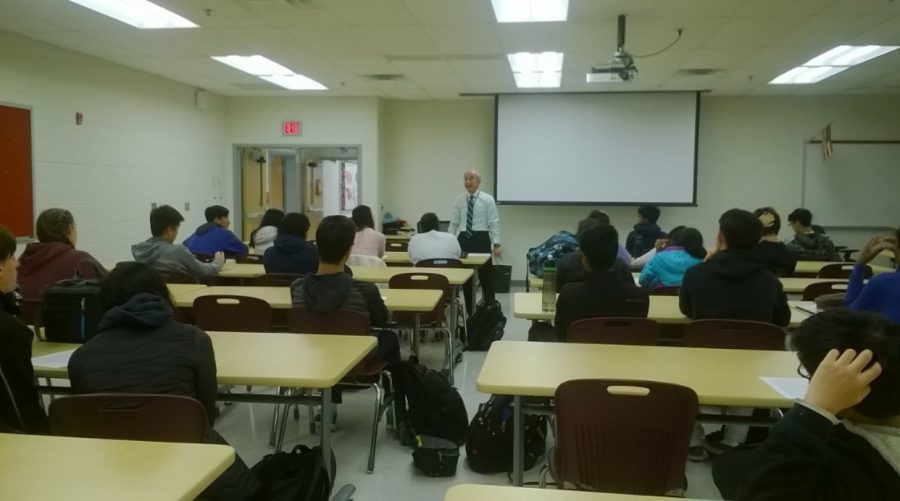Taking Research to the Next Level
Director of Mentorship, Mr. Alfred Lampazzi, hosted two mentorship interest sessions on Wednesday, November 14, to aspiring mentorship students.
November 21, 2018
Conducting research in a real-world lab is something that is often simply an unrealized dream for high school students across the country. However, at Jefferson, every senior is presented the opportunity to apply for mentorship instead of a senior research lab. Mentorship is a program that pairs students with mentors who are researchers affiliated with various institutions, including George Mason University and the National Institutes of Health . Students conduct research alongside their mentors often during the summer before senior year, and then for the fall semester.
Director of Mentorship, Mr.Alfred Lampazzi, has many responsibilities to ensure that the mentorship process runs smoothly – before the application process, during, and afterwards in mentorship. In August, he is responsible for meeting with all lab directors to review the senior research lab expectations for the following year. This is followed by various meetings scheduled in late fall and early winter with juniors to introduce the application process. In January, potential applicants are interviewed for potential mentorship placement, and in the spring, decisions are finalized.
“I go out during the summer to visit the mentorship students, so that they are ready to hit the ground running in the fall. Then, I visit again in the fall semester to ensure that everything is running smoothly.” Lampazzi said.
Mentorship is a process which begins in junior year, and is determined over the course of the year.
“For juniors, first of all, they have to apply for a particular lab through the Senior Research Lab application process on Blackboard. With that application, they will have to fill out the mentorship portion of the application.” Lampazzi said. “Once they complete the application, I will receive a list of all of the students and their mentorship applications. Once I have the database of students set up, I set up a meeting in December, which is required for students to attend to understand the specifics of mentorship. For example, senior schedules, the placement of mentorship students, the interview, the teacher recommendations, and the aspects of transportation from home to mentorship and TJ to mentorship and vice versa.”
In the past 12 years, mentorship has seen an increase in the number of students enrolled in the program. This year, there are 51 students who are actively working at various research institutions, including universities as well as private firms. In addition, Lampazzi does enjoy working with students actively throughout mentorship.
“The favorite part is following the selected mentorship students through their research, whether they work at Georgetown University, NIH, George Mason University, or any of the private firms.” Lampazzi said. “In addition, I truly enjoy setting up the stage for members of the junior class who have an interest in mentorship – guiding them through the application process, interviewing them, and starting the placement process at the various mentorship sites.”






